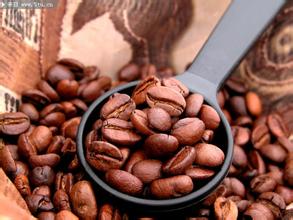Indonesian Coffee Flavor and Taste Manor introduction to Indonesian Coffee characteristics Fuyin Manor Kopi Luwak
Indonesia, which crosses the north and south sides of the equator, belongs to the tropical rain forest climate, which is controlled by the equatorial low pressure belt all the year round, prevailing updraft, high temperature and rainy all the year round. The main type of precipitation is convective rain, with an annual average temperature of 25 ℃.
Rain Water is abundant, with plenty of light, and is distributed in tropical rain forests, subtropical evergreen broad-leaved forests, mountain thickets or hills, mountains and grasses below 2000 meters above sea level. This geographical environment is suitable for the survival of civets, resulting in a special Kopi Luwak. It is produced in some islands of Indonesia, such as Java, Sumatra, Bali and Sulawesi, where Kopi Luwak is a traditional specialty. The price "Kopi Luwak" is the least produced coffee in the world. Because these beans are produced by wild animals that are already scarce and uncertain, and are difficult to control and produce in large quantities, the quantity of civet coffee is extremely rare. The global annual output does not exceed 400kg. At the 2012 World Expo, the Indonesian Pavilion displayed Kopi Luwak, and a cup of 4 oz coffee can sell for $168 (1400 yuan). Local coffee farmers, in pursuit of high profits, bring wild civets home to raise them so that they can produce more Kopi Luwak. However, the Kopi Luwak produced by breeding civets will be much worse in color and taste. Even so, the output of this kind of coffee is still very rare. The production process: 1. Collect the feces from the civets after eating the coffee fruit and pick out the undigested coffee seeds. 2. Peel off the silver-gray film of coffee seeds, wash them and dry them in the sun. 4. After stir-frying, the civet coffee beans are made. Only about 150 grams of coffee beans can be extracted from a jin of civet droppings.

Important Notice :
前街咖啡 FrontStreet Coffee has moved to new addredd:
FrontStreet Coffee Address: 315,Donghua East Road,GuangZhou
Tel:020 38364473
- Prev

Introduction to the quality of Salvadoran Coffee Manor
El Salvador's coffee accounts for 40% of the country's exports, and it is usually picked in November, December and January-March of the following year. The export of raw beans lasts almost all year round. Coffee is produced in seven of the country's 14 provinces, with the largest number in the northwestern provinces of chalatenango and santa ana. The coffee produced in El Salvador is 100% Arabica, of which 68% is
- Next

Guatemalan Coffee Manor area introduces Guatemalan Coffee Flavor Taste Latisa Manor
Now that we are talking about the Vivette South Fruit producing area, we have to introduce the star manor El Injerto, whose name comes from the unique fruit name of the Vivette Nanguo region. There are quite a variety of coffee trees in the manor. Here, Bourbon, Pacamara, Marago Gippe and other varieties are planted. It has a history of COE competitions in Guatemala.
Related
- Does Rose Summer choose Blue, Green or Red? Detailed explanation of Rose Summer Coffee plots and Classification in Panamanian Jade Manor
- What is the difference between the origin, producing area, processing plant, cooperative and manor of coffee beans?
- How fine does the espresso powder fit? how to grind the espresso?
- Sca coffee roasting degree color card coffee roasting degree 8 roasting color values what do you mean?
- The practice of lattes: how to make lattes at home
- Introduction to Indonesian Fine Coffee beans-- Java Coffee producing area of Indonesian Arabica Coffee
- How much will the flavor of light and medium roasted rose summer be expressed? What baking level is rose summer suitable for?
- Introduction to the characteristics of washing, sun-drying or wet-planing coffee commonly used in Mantenin, Indonesia
- Price characteristics of Arabica Coffee Bean Starbucks introduction to Manning Coffee Bean Taste producing area Variety Manor
- What is the authentic Yega flavor? What are the flavor characteristics of the really excellent Yejasuffi coffee beans?

